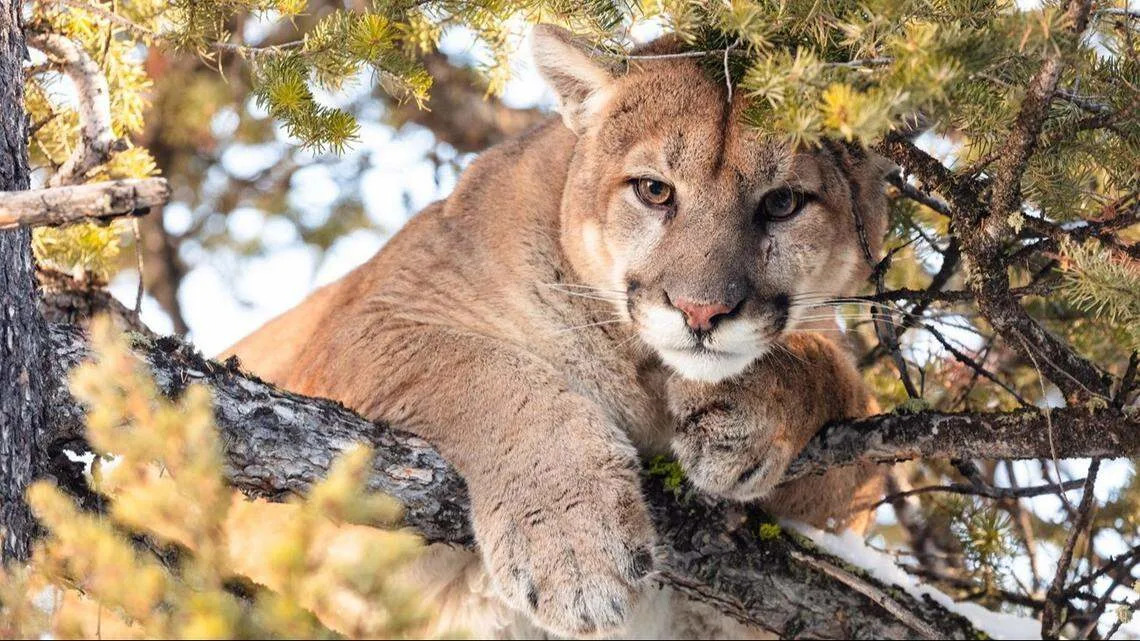
You’re on a hiking trail in the Pacific Northwest when you catch a glimpse of a massive, cat-like creature with a tawny brown coat and a black-tipped tail.
You’ve just spotted a mountain lion.
“Cougars are one of the most reclusive, elusive and stealthy creatures of the forests,” the National Park Service said on its website. “Thus, they are rarely seen by people.”
A mountain lion recently injured a child who was hiking in Olympic National Park, The News Tribune reported.
How common are cougars in Washington state? What should you do if you encounter a mountain lion in the wild? Here’s what to know:
What happened in cougar attack at Olympic National Park?
On Sunday, July 20, a mountain lion attacked a 4-year-old child near the Victoria Overlook area on Hurricane Ridge in Olympic National Park, the NPS said in a Monday, July 21 news release.
Olympic National Park in northwest Washington encompasses nearly a million acres of land, including “glacier-capped mountains, old-growth temperate rain forests and over 70 miles of wild coastline,” the NPS says on its website.
The wild cat, which was wearing a tracking collar, bit the child while they were “walking with their family on a popular trail,” the federal parks agency said.
“Park staff located and dispatched the animal” the following day, the NPS said in the release. “There are no current threats to the public.”
Mountain lion attacks on humans are “incredibly rare,” according to the Mountain Lion Foundation. The nonprofit conservation group said there have been just 29 cases of fatal mountain lion attacks involving people in North America since 1868.
Only two people have died from cougar attacks in Washington state in the past century or so, Sierra magazine reported in 2018.
What do cougars look like?
Cougars, also known as mountain lions or pumas, are “sleek and graceful” predators known for their “strength, agility and awesome ability to jump,” according to the Washington Department of Fish & Wildlife.
The big cats vary in color from reddish-brown to tawny to gray, sporting black tips on their long, ropy tails, the state wildlife agency said on its website.
Cougar kittens sport spots until they turn 4 or 5 months old.
Cougars are considerably bigger than other members of the cat family found in Washington state, such as bobcats and Canada lynx.
Adult male cougars can weigh up to 180 pounds and measure 7 to 8 feet long “from nose to tip of tail,” the Washington Fish & Wildlife Department said, while female mountain lions rarely weigh more than 110 pounds.
How common are mountain lions in Washington state?
According to the Washington Department of Fish & Wildlife, cougars be found throughout Washington state wherever “suitable cover and prey are found.”
“Cougars use steep canyons, rock outcroppings and boulders or vegetation such as dense brush and forests to remain hidden while hunting,” the agency said, with male mountain lions covering a range of 50 to 150 square miles to find food.
Although it doesn’t regularly monitor or count cougar numbers, the Washington Department of Fish & Wildlife estimates there are approximately 2,400 adult or nearly adult cougars living in the state.
What’s the best way to prevent a cougar attack?
According to the Mountain Lion Foundation, the best way to prevent encounters with cougars is to keep them away from your property.
“The best thing to do is to keep a barrier between you and the wildlife,” the nonprofit said. “By doing so, you will save your pets and livestock from becoming dinner and help keep (cougars) out of trouble ...”
The Mountain Lion Foundation recommends bringing your pets indoors “whenever possible,” especially at night.
“Cougars are most active from dusk to dawn,” the Washington Department of Fish & Wild life said, although it’s “not unusual” for the wild cats to go hunting during the day.
You should also secure your livestock at night in a “fully enclosed structure” such as a shed or barn, the Mountain Lion Foundation said, adding that tall fences and specially trained guard dogs can also keep cougars at bay.
You should avoid attracting deer — cougars’ natural prey — to your yard or garden by keeping tempting, tasty plants at a minimum and installing proper fencing, the Mountain Lion Foundation said.
You can keep away other mountain lion food sources, including raccoons and feral cats, by storing pet food in a secure enclosure, feeding your animals indoors and securing your garbage cans, the foundation said.
“Timed or motion sensor alarms with flashing lights, loud noises and sprinklers may work on mountain lions, and can also provide an added bonus of scaring other pesky neighbors who show up uninvited,” the Mountain Lion Foundation said.
What should I do if I encounter a mountain lion?
Before hitting the trail, the Mountain Lion Foundation recommends putting on “bright and highly contrasting clothing” and asking about recent wildlife sightings.
You should stay on trails, check maps to avoid getting lost and keep your pets secure on leashes.
“Avoid jogging or mountain biking in low-light conditions at dusk and dawn,” the Mountain Lion Foundation said.
According to the NPS, you should follow these steps if you see a cougar in the wild:
Do not approach.
Stop, stay calm and do not turn your back. Do not run.
Face the animal, stand upright, talk calmly and firmly to the cougar and give it a way to escape if you can.
Do all you can to appear larger. For example, open your jacket and raise or wave your arms.
Pick up small children or pets so they won’t panic, flee or make rapid movements.
If the cougar becomes more aggressive, become more aggressive toward it.
Fight back if attacked.
Since mountain lions are “potentially dangerous” animals, you should report all cougar sightings to park rangers or submit an online wildlife report, the NPS said.







Comments